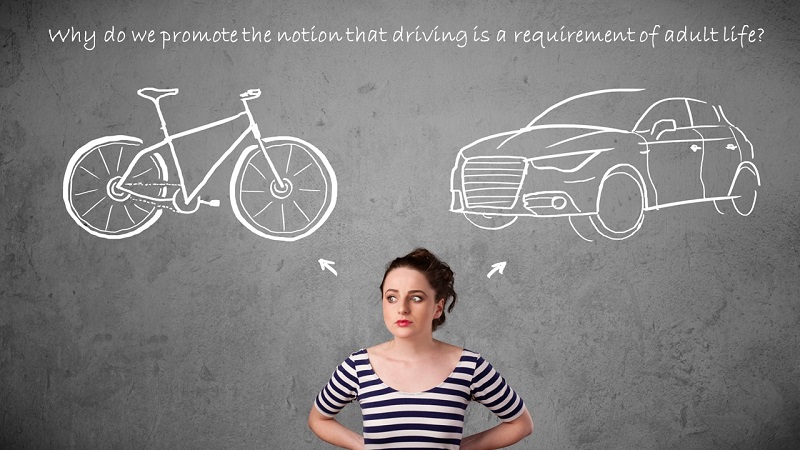As children, we needed only to look out a window to see the seemingly endless network of roads covering the world and all the grown-ups zipping about in their cars every day. For many, we would watch our parents drive off in the family car each morning to go to work or to run errands. We instinctively knew that driving was only something that adults could do, creating this inherent acceptance that driving is simply a part of adult life. As we got older and closer to driving age, we may have been given some amount of driver safety education at school on the importance of being sensible behind the wheel; the ad campaign, ‘Drive like gran is in the car’, being a recent example used by Scottish Government to target young drivers. Being given such messages at a young age went some way in reinforcing the idea that driving is simply an inevitability for all of us – a requirement of adulthood.
Perhaps the above narrative is too general, but the number of licenced 17-20 year olds has been on an gradual upward trend over the past two decades. Between 2002 and 2018, there was a 5% increase in the number of 17-20 year olds who held a licence, increasing from 32% to 37% . The Covid pandemic has caused this number to drop in recent years, but the overall trend suggests that a significant proportion of each generation is being added onto the already bursting road network every year. Our towns and cities were not built to accommodate this growing level of traffic. We need only point to the problems we have with congestion or the number of potholes on roads to evidence this point. And even more crucially, the ongoing climate crisis demonstrates the pressing need for global decarbonisation and a reduction in car usage.
So why do we continue to promote the notion that driving is a requirement of adult life?
There is clearly an urgent need to make changes to our attitudes and approach to transporting ourselves around. We are seeing more attention being given to future alternative travel modes. Various automated vehicle trials are being conducted around the world (Endeavour and ServCity are examples of which TRL have recently been involved with in the UK), numerous countries are creating policies to regulate the use of new personal mobility devices such as e-scooters, and car-share programs (e.g. Zipcar) are becoming more commonplace in larger cities. These are all positive developments for the future of transport and reducing private car ownership. Changing our behaviours to reduce private car use would provide significant benefits to the environment and safety. Less reliance on motorised transport could make space for the infrastructure required to operate active travel modes more safely and generate an improvement in public health, reduced carbon emissions, and a lower likelihood of high-speed collisions.
In order for these benefits to be realised, there is arguably still a need to stem the flow of new drivers and their vehicles being added onto the road network. There is therefore sufficient justification in trying to discourage the need to drive and own a vehicle in the pre-driver group.
What are the options?
More effort could be given to educate this demographic on alternatives to driving and target that inherent belief that driving is a part of adult life. This would likely be a matter of providing formal education during early school years on what the future of transport should look like – a world of new mobility devices, reduced private car ownership, and automated public transport systems. With vehicle running costs growing increasingly more expensive, improving awareness around the comparative costs of car ownership compared to public transport use (shown in the table here) may also dissuade some individuals from learning to drive.
This would have to be complemented with wide-scale media campaigns and clear government messaging that reinforces the core idea and why it is important. It would be imperative for such messaging to emphasise the long-term global benefits to greenhouse gas emissions as well as overall road safety.
Of course, such endeavours would require significant investment to achieve, but this does not mean the problem should be ignored. Instead, it means that the burden lies on everyone to encourage the younger generation to adopt safer, greener alternatives to private car ownership.
Recent accounts from the US would suggest that teens are becoming less likely to rush into driving. It is possible that such trends may become more prevalent as the cost of learning to drive continues to become less affordable – the current ‘cost of living crisis’ will inevitably make an investment in car ownership even more
difficult to achieve for many young people. The Covid pandemic has also demonstrated that many work and learning activities can be completed from home. Even some leisure activities are more accessible from home, with the rise in online streaming services and internet shopping.
These may prove as examples to younger generations that their future does not rely on being able to drive.


